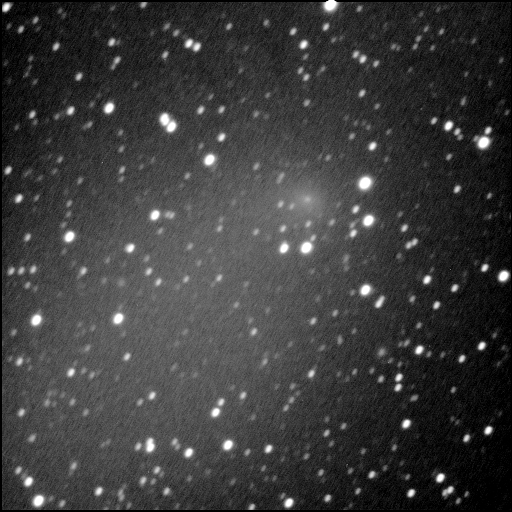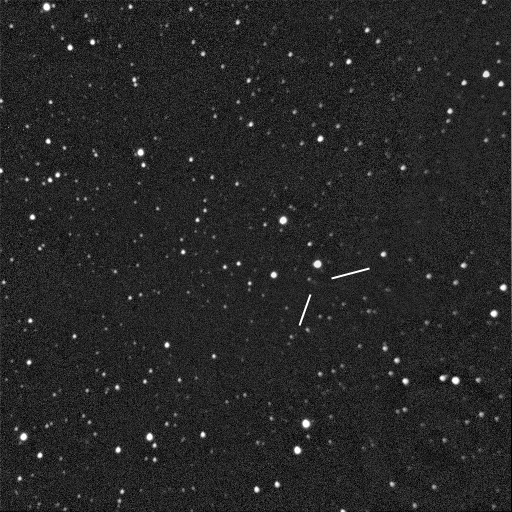
Comet Holmes, September 1, 2007.
2 minutes exposure.
SBIG ST-9XE CCD. 16" f/10 schmidt-cassegrain telescope with an f/6.3 focal reducer.
Probably the most spectacular event for visual observers in 2007 was the incredible outburst of comet Holmes in late October. The outbrust, which closely paralleled the one which occured during its discovery return, resulted in the ejection of a large cloud of gas and dust, and resulted in the brightness jumping from around magnitude 17 to around magnitude 2! An increase of over a million fold!!!! As the cloud expanded away from the nucleus, the comet appeared clearly non-stellar even to the naked eye, and in the telescope made for one of the strangest looking comets I have ever observed. One of the most difficult problems associated with the outburst was the extreme size that the cloud became. As it expanded, it quickly became too large to fit in the CCD field of even my 5" refractor! Visual observation with the telescope observation also required very low magnification to fit it into the field.
A little over a month before the outburst, I had imaged the comet as part of my project to image faint periodic comets. On that night the comet was about 17th magnitude, and gave no indication of the fireworks to come.

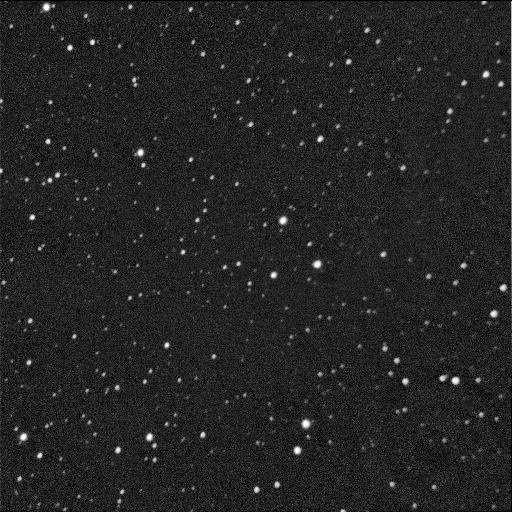
My first opportunity to observe the comet after the outburst came on October 28. By this time I had just taken delivery of an SBIG STL1001E CCD which had a chip that was twice the size of the ST-9, resulting in a much larger field, which was very fortunate for imaging such a large comet. However, the CCD was also much more sensitive, and with the comet now being around magnitude 2, short exposures were a must to avoid saturating the CCD! Comparing the images below with those above, the scale of the outburst can be appreciated!
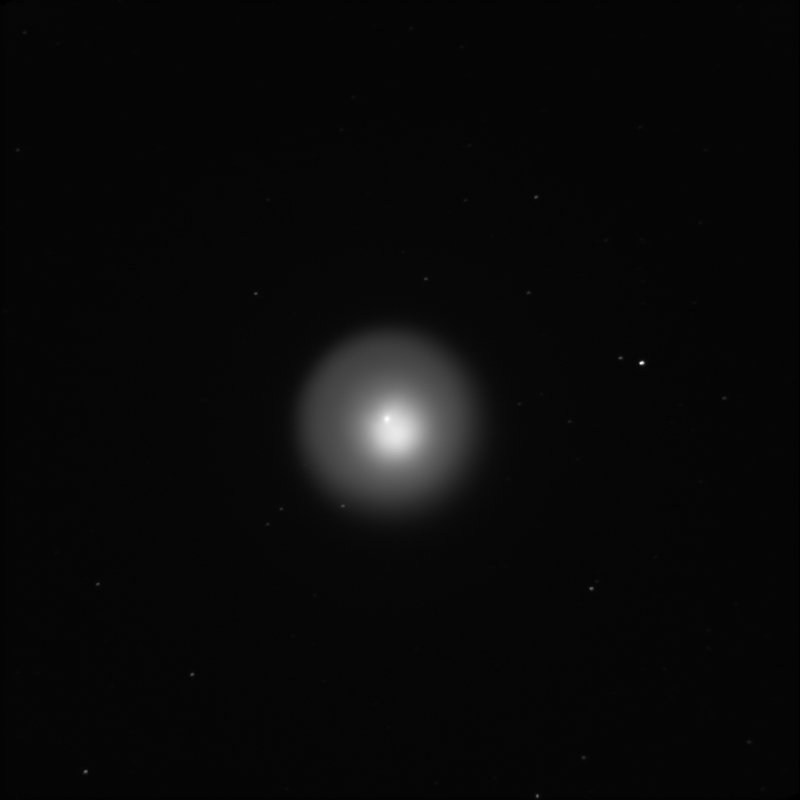
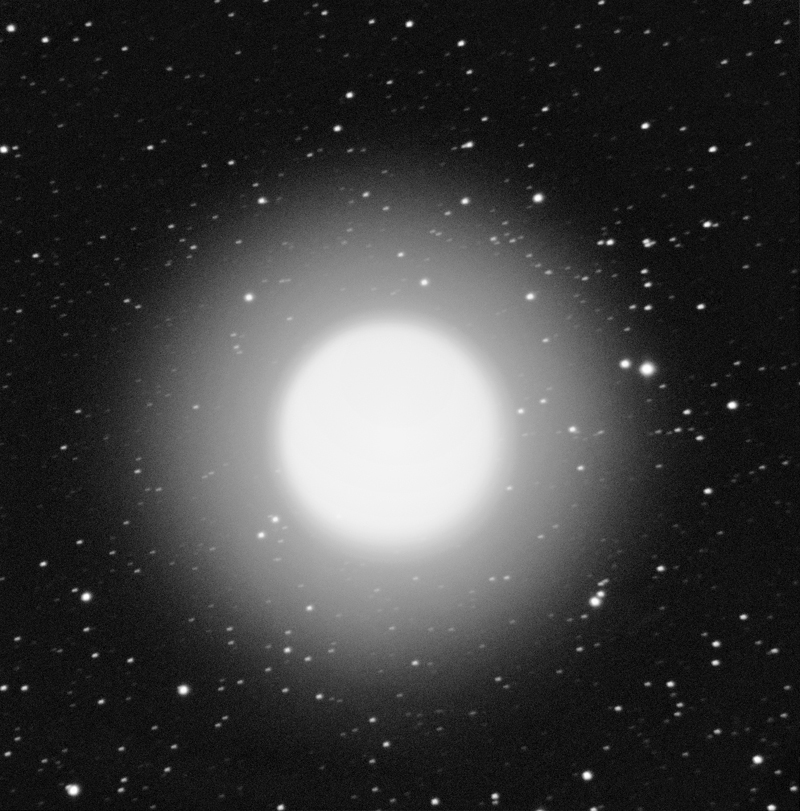
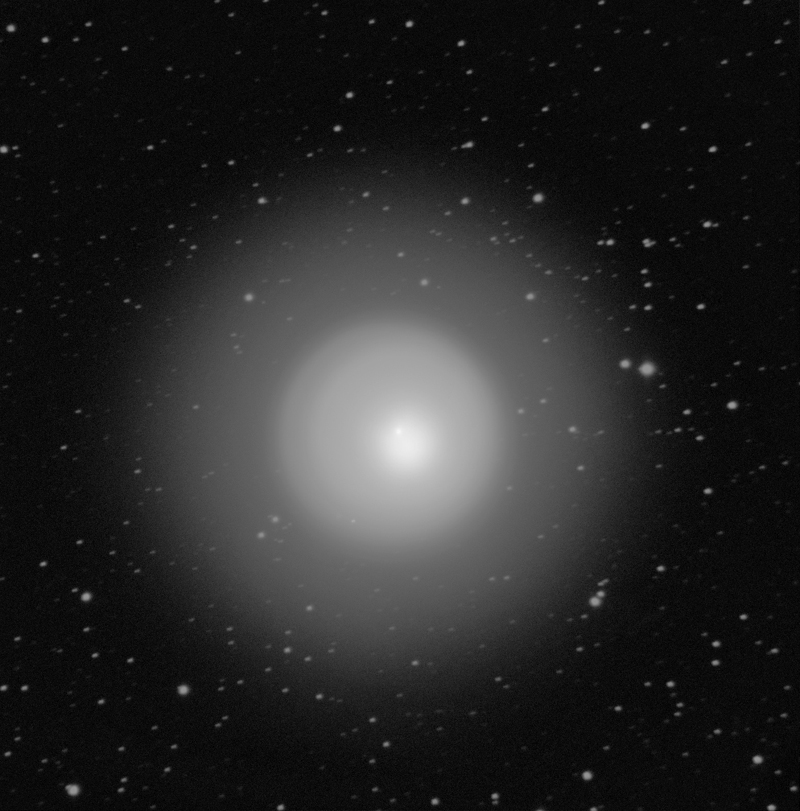
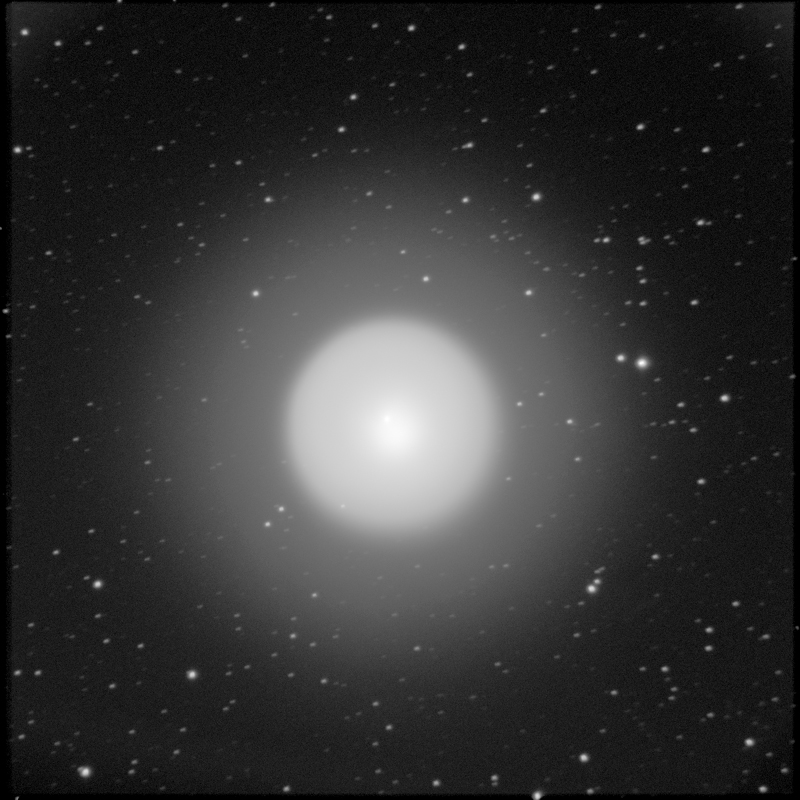
As well as using the 16" telescope to image the comet, I also made some colour images with my 5" refractor. The result is shown below.
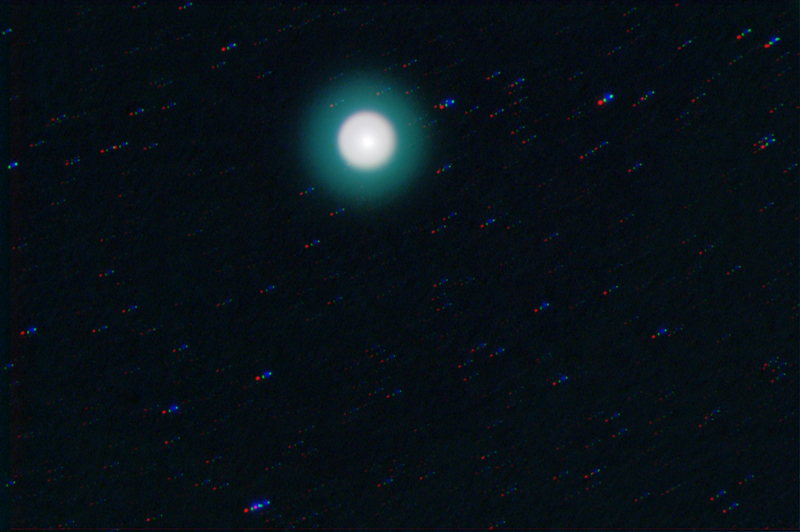
In the above image, the greenish hue of the outer part of the come shows that it is composed of gas erupted from the nucleus. The whiteish colour of the inner portion of the coma shows that it is mostly dust.
As time progressed, the coma expanded rapidly, eventually reaching more than twice the size of the Sun! At the same time, the gasseous outer coma became very faint and eventually faded from view, leaving the brighter dust coma visible. This can be seen in the next few images.
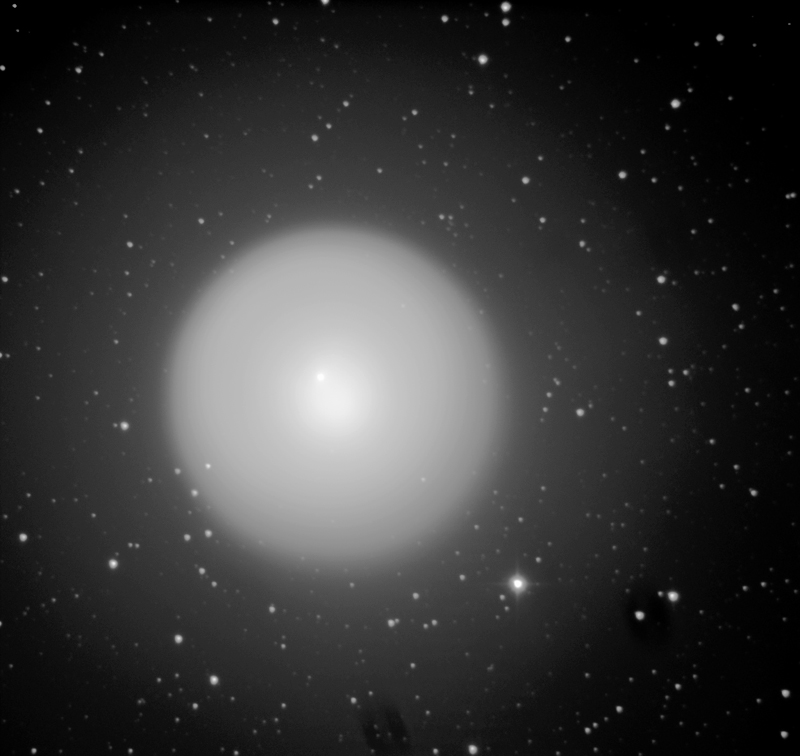
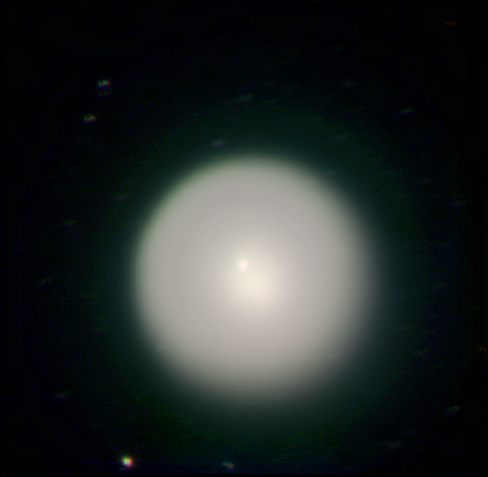
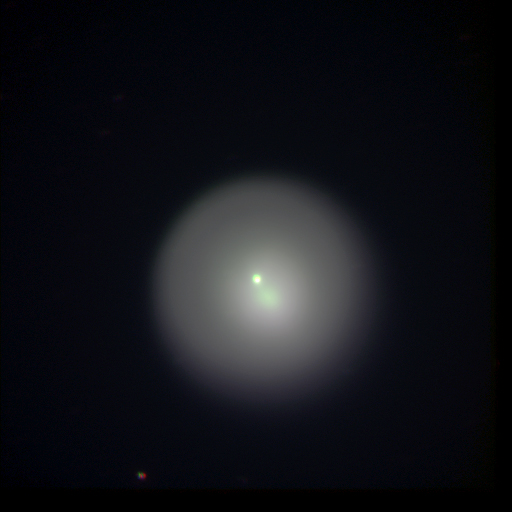
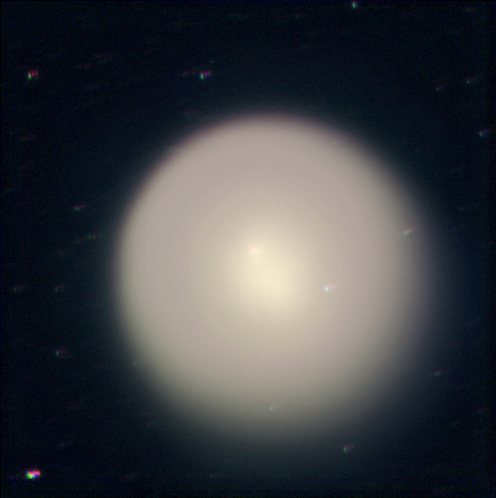
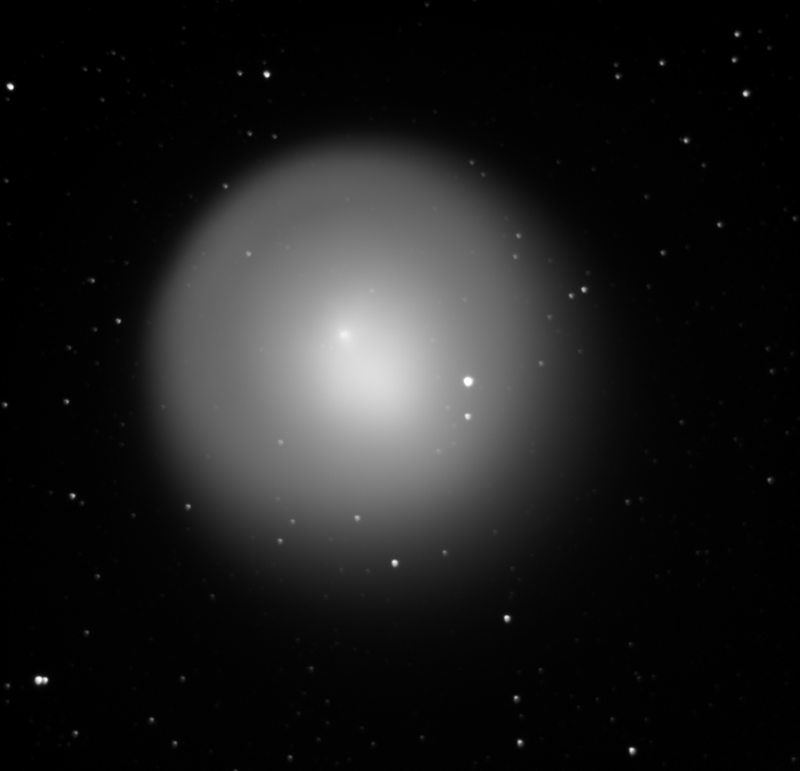
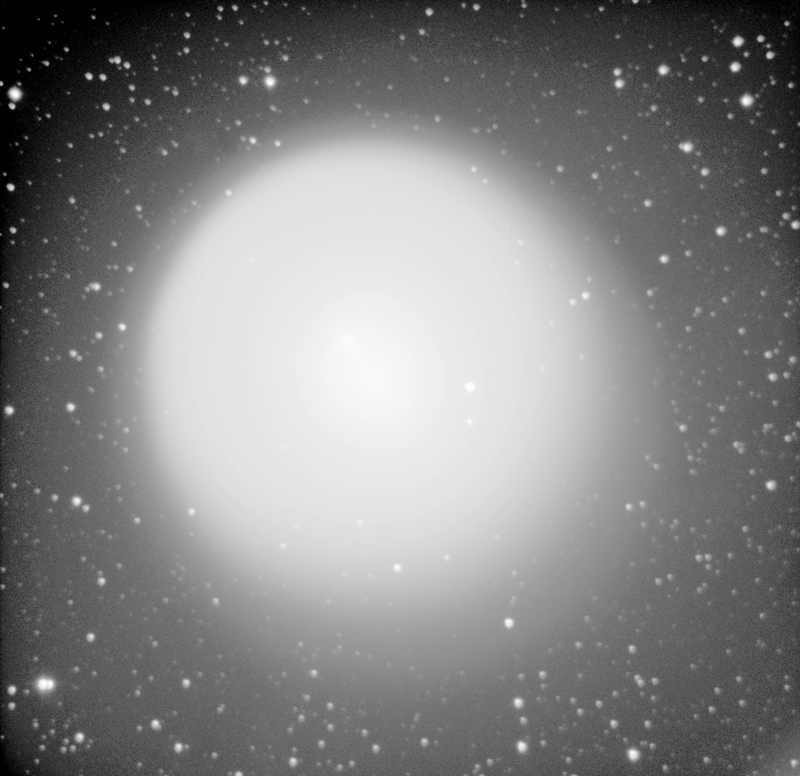
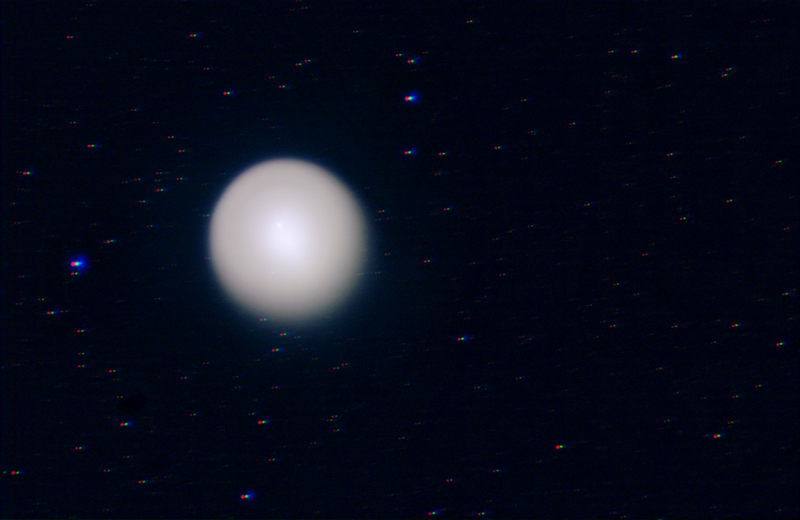
What is particularly interesting in the above images, is that the brightest portion of the coma is offset by quite a distance from the central condensation. Also, in the last couple of images, notice how the bottom right edge of the coma is becomming extended as though it was trying to form a pseudotail.
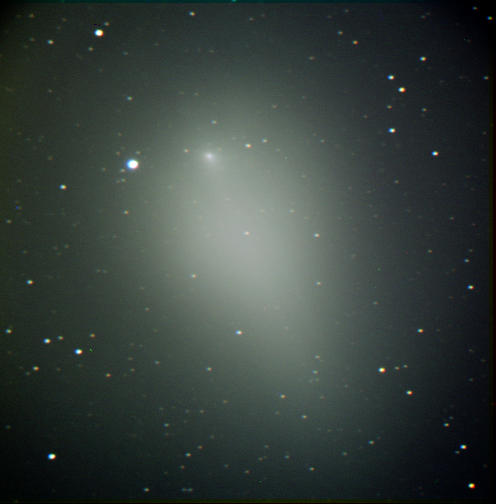
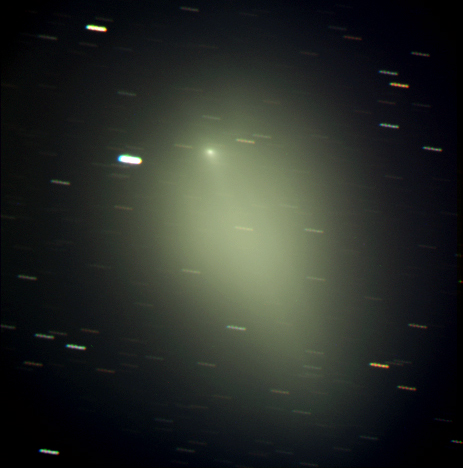
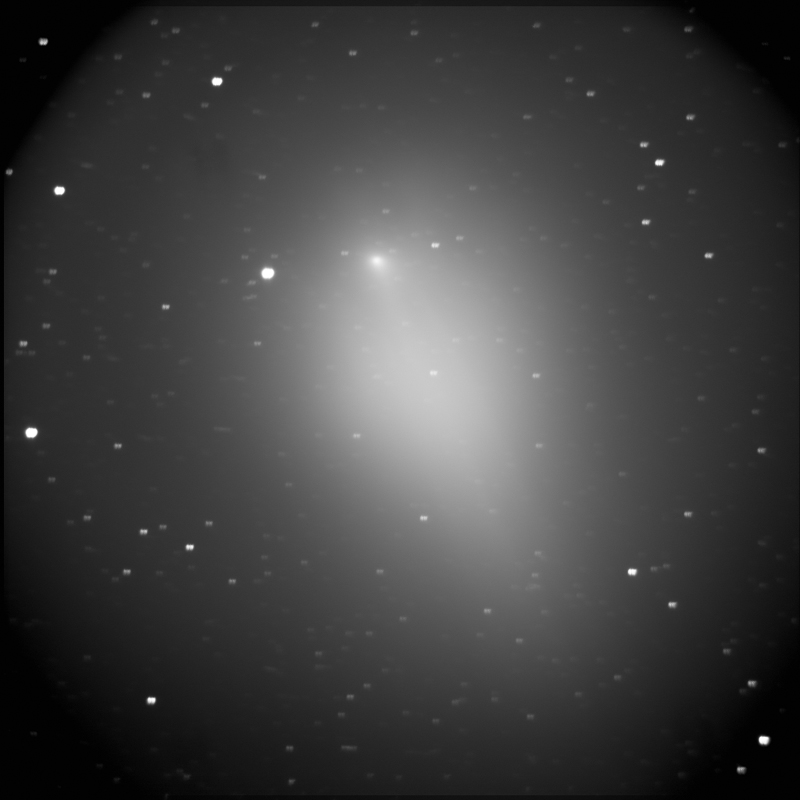
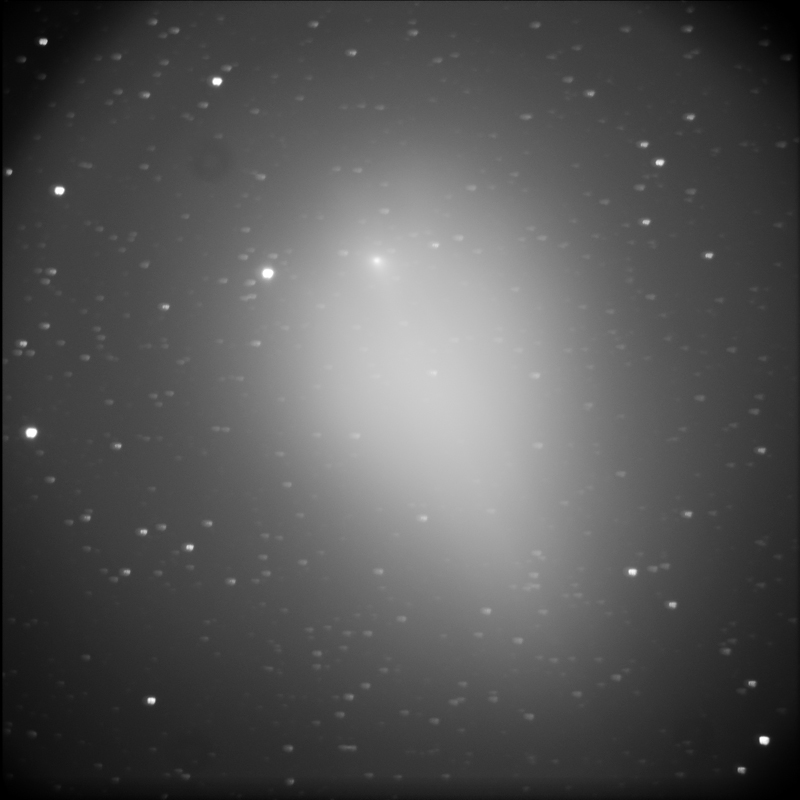
By December, the comet was becoming more difficult to observe as the coma continued to expand. At the same time, what looked like a tail was developing inside the coma. This gave the comet a very strange appearence indeed!
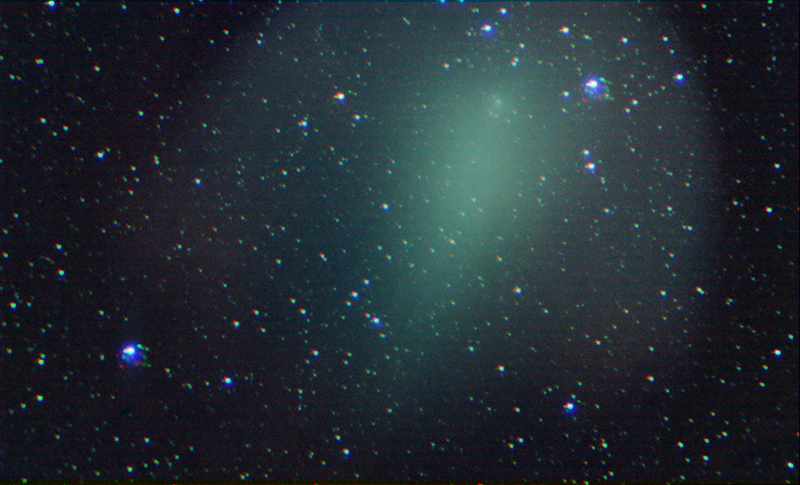
By the middle of January, the comet the coma had expand so much and become so diffuse, that it was getting very difficult to image without a very wide-angle lens. The image below looks like it has not been flat-fielded, however this is just the effects of the very large and faint outer coma.
